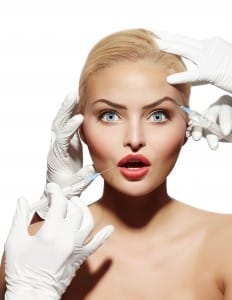The Grisly History of Plastic Surgery
 The modern trend for plastic surgery reality television isn’t the first time that people have had the chance to compete for the chance of a plastic surgery makeover. In the 1920s a competition was run in the New York Daily Mirror asking for the “homeliest girl” in the city to come forward and the winner would be made into “a beauty” by a plastic surgeon.
The modern trend for plastic surgery reality television isn’t the first time that people have had the chance to compete for the chance of a plastic surgery makeover. In the 1920s a competition was run in the New York Daily Mirror asking for the “homeliest girl” in the city to come forward and the winner would be made into “a beauty” by a plastic surgeon.
Plastic surgery has a much longer and convoluted history than most people realize. It has mixed origins which lie in part in the correction of syphilitic deformities and racialized ideas about acceptable facial features as well as the aim of aesthetic improvement.
Some of the first known plastic surgeries took place in 16th century Britain. There were Tudor “barber surgeons” which treated facial injuries, an essential role in a society where an ugly or damaged face was considered to reflect a disfigured inner self. However, due to the pain and risks of surgery at the time cosmetic surgeries were generally restricted to severe and stigmatized disfigurements, such as the loss of a nose.
Purely cosmetic surgery didn’t really become commonplace until it wasn’t as painful and the risk to life had been greatly reduced. Thanks to the various advancements in the fields of anesthesia and hygiene this had been achieved by the 1880s.
Soon it wasn’t unusual to see adverts for various surgeries such as Derma-Featural Co’s adverts for treatment for “humped, depressed, or… ill-shaped noses”. However, the surgeries were still very primitive and full of risks. For instance the use of “paraffin wax” for nose jobs where hot wax was injected into the nose and them molded into the desired shape could result in the wax migrating to other parts of the face and cause disfigurements or even wax cancers.
Much of the work to advance plastic surgery techniques came about as the result of a desire to correct features such as ears, noses and breasts which were seen as “ugly” as they weren’t typical of “white people”.
In the US, where the immigrant population was steadily growing, pug noses, large noses and flat noses were seen as signs of racial difference and were therefore considered ugly. Similarly, small rounded breasts were considered youthful and sexually controlled while larger breasts were considered primitive and a deformity. As a result in the early 20th century breast reductions were common.
The changing views about noses, breasts and so on demonstrate how standards of beauty change with time and place. Surgical trends have always been linked to the qualities valued by the surrounding culture as well as ideas about race, health, femininity and so on.
While today plastic surgery is on the whole viewed as an entirely positive thing it is worth remembering that modern cosmetic surgery owes a huge amount to racism and not, as is often thought, to the helping of those injured in war or other horrific circumstances.


